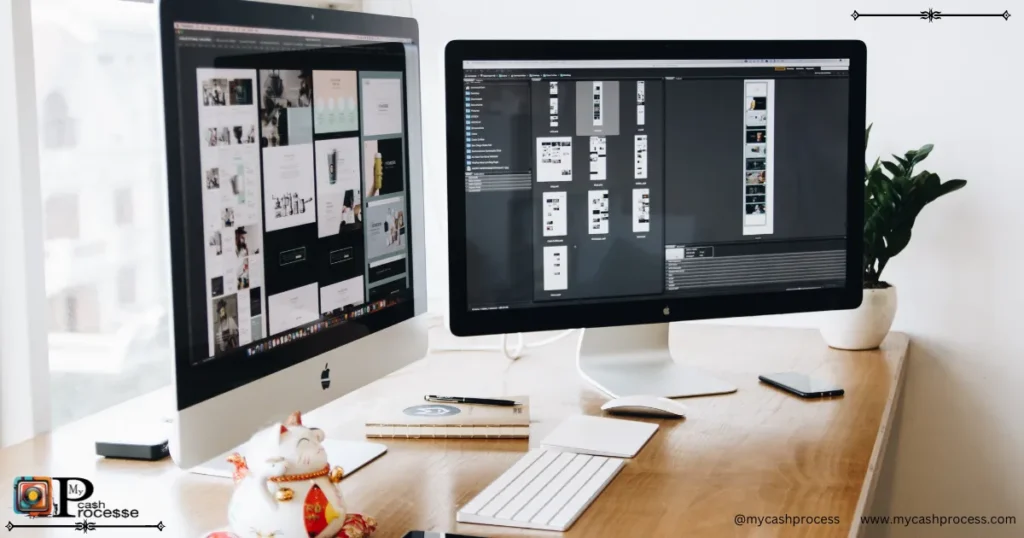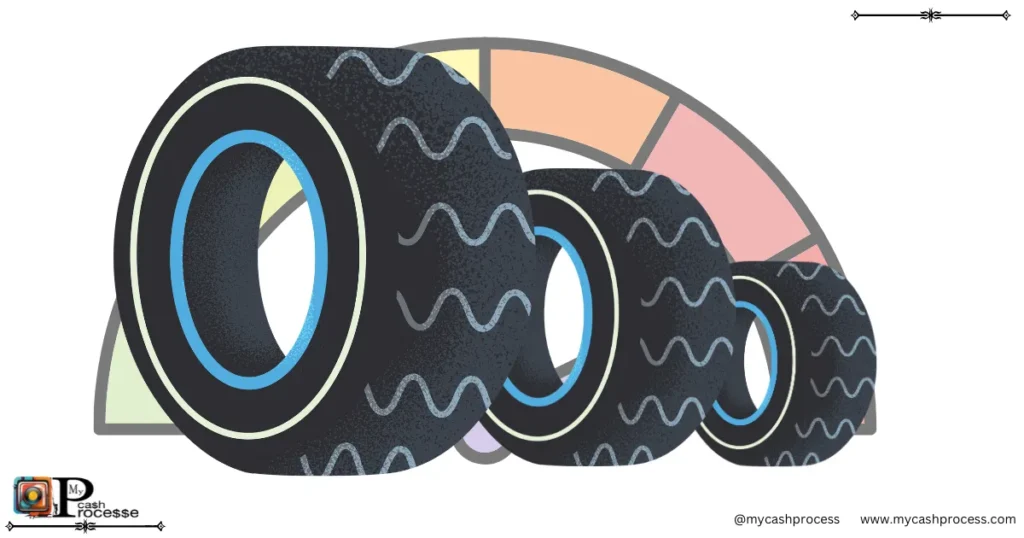Bra Sizing Website Introduction:
Responsive web design has become an essential part of creating a seamless user experience, as more people access websites on a variety of devices. When we think of responsive design, websites such as a bra-sizing website offer an interesting and valuable case study. These sites must be optimized for different screen sizes while ensuring that the user experience remains intuitive, functional, and engaging.
In this article, we will explore the intricacies of website sizing and the importance of responsive design for different breakpoints, using the bra-sizing website as a central example. Furthermore, we will provide you with key insights into best practices for optimizing your website’s performance, including useful parallels with other industries, such as a website for understanding tire sizing.
Creating a bra sizing website is not just about delivering accurate measurements; it’s about offering a seamless and responsive user experience. In today’s digital age, users expect websites to adapt to their devices while providing intuitive navigation. This article explores the core design principles, techniques, and parallels to other sizing guides, ensuring your website meets modern web standards.
Full Article Navigation
Understanding the Role of a Bra Sizing Website in Modern Web Design
In modern web design, a bra-sizing website serves a unique role that requires both detailed product information and a user-friendly design. This is particularly critical because the online shopping experience for intimate apparel—such as bras—relies heavily on correct sizing information. An improperly sized product can lead to returns and frustrated customers, affecting the overall brand experience.
Why Website Sizing Matters in Responsive Design
A bra-sizing website is inherently different from other e-commerce websites due to the complex, personalized nature of sizing. Unlike standard sizes for shoes or shirts, bra sizing involves multiple dimensions such as cup size and band size, which can vary significantly across different brands. To ensure that a bra-sizing website offers a positive user experience, the website must be tailored to account for various breakpoints across devices.
Responsive Design Features for a Bra-Sizing Website
A seamless user experience must involve easy navigation through sizing charts, filtering options, and product details. Sizing website design for different breakpoints ensures that these elements adapt to the user’s device, whether they’re browsing on a mobile phone, tablet, or desktop computer.
This section will dive deep into:
- The significance of personalized sizing advice
- The challenges of designing user-friendly features for a bra-sizing website
- How website sizing needs to adjust for smaller screens and more complex design elements
- Using modern web development tools to implement responsive, adaptive layouts
Website Sizing Guide: Ensuring Optimal User Experience Across Devices
A website sizing guide is a crucial tool for any website that caters to various screen sizes and devices. For e-commerce sites such as a bra-sizing website, the website sizing guide helps users easily navigate product options, see real-time updates, and find the most accurate size recommendations. The website sizing guide provides an essential starting point for creating adaptive designs that scale effectively with different screen sizes.
Optimizing for Mobile Devices
A significant portion of online shopping is done through mobile devices. A bra-sizing website that isn’t optimized for mobile users risks alienating a large portion of potential customers. Responsive design must ensure that key elements such as size charts, product images, and filtering options are seamlessly presented on mobile screens.
How to Build a Comprehensive Website Sizing Guide
This section will focus on:
- Best practices for designing mobile-first user interfaces
- Ensuring a smooth transition from desktop to mobile with touch-friendly navigation
- Case studies of well-designed bra-sizing websites that excel in mobile responsiveness
How Sizing Website Design for Different Breakpoints Enhances Usability
One of the core components of responsive design is the effective use of sizing website design for different breakpoints. Each breakpoint (desktop, tablet, mobile, etc.) represents a distinct set of challenges and opportunities. The process of defining these breakpoints is crucial in maintaining a consistent, intuitive user experience across a variety of devices.
Understanding Breakpoints
In a bra-sizing website, ensuring that the content fits well across different breakpoints means tailoring product displays, size input fields, and user navigation to work within the available screen space. The website sizing guide helps designers establish consistent breakpoints for every user.
Strategic Adjustments for Sizing Across Devices
- How to ensure that dynamic content, like size charts, adjusts correctly across multiple screen sizes
- Improving page load speed for mobile users without sacrificing content visibility
- Case examples of a website for understanding tire sizing that has incorporated well-defined breakpoints

Key Principles for Implementing Responsive Design in a Bra-Sizing Website
Implementing responsive design requires specific principles that help designers navigate challenges, particularly when dealing with detailed content like that on a bra-sizing website. These principles include flexible layouts, media queries, and the strategic use of scalable assets.
Flexibility in Layouts and Images
One of the primary challenges in a bra-sizing website is to ensure images, charts, and tables adjust fluidly to various screen sizes. A website sizing guide provides valuable insights into how to use relative units (such as percentages) instead of fixed units to ensure flexibility across breakpoints.
Media Queries and Conditional Layouts
Responsive design requires media queries to apply specific CSS rules at different breakpoints. Using media queries properly allows developers to tailor the layout for different screen sizes. For example, a bra-sizing website may require additional space for content on larger screens but could streamline its layout for mobile users to reduce clutter and enhance user experience.
Leveraging Scalable Design
This section will cover:
- The principles of a fluid layout system
- Best practices for scaling content, including text, buttons, and product images
- Examples of high-quality bra-sizing websites with effective responsive designs
Drawing Parallels: A Website for Understanding Tire Sizing and Website Sizing
In order to explain the concept of website sizing, let’s draw a useful parallel between a website for understanding tire sizing and the importance of responsive web design. Just as understanding tire sizes can be a challenging and detailed process, so is designing for multiple devices.
Analogies Between Tire Sizing and Website Sizing
A website for understanding tire sizing requires clear, easy-to-understand information across various formats (web, mobile, etc.). Similarly, website sizing requires adaptive elements that adjust based on the user’s device, ensuring that both small and large screens can handle complex content in a user-friendly manner.
Practical Insights
This section will highlight:
- How tire sizing websites use responsive elements to present technical data clearly
- Lessons learned from tire sizing websites that can be applied to bra-sizing websites for smoother user experiences
- How a website for understanding tire sizing can inform decisions about scaling content across devices
Advanced Techniques for Testing and Optimizing Website Sizing for Various Breakpoints
Once a bra-sizing website has been designed for responsive performance, the next step is testing and optimization. Testing ensures that the site functions across devices, and optimization ensures that the user experience is as smooth as possible.
User Testing Across Devices
Testing for usability across various breakpoints and devices is critical. This includes manual testing as well as using specialized tools to simulate real-world conditions. Automated tools and browser extensions for testing responsiveness will be discussed, offering insights into ensuring the design works across various screen sizes.
Tools for Optimizing Website Sizing
Optimization tools, such as performance analyzers, will help identify problems related to page speed, layout shifts, and resource loading times. A slow-loading bra-sizing website can significantly affect the user experience, especially when users need to quickly access product information on mobile devices.
Effective Optimization Strategies
- Techniques for responsive testing across all breakpoints
- Tools that can be used to analyze the speed and responsiveness of bra sizing websites
- Case studies of successful optimization techniques for websites with complex sizing charts and tools
Understanding the Role of a Bra-Sizing Website in Modern Web Design
A bra sizing website serves as a bridge between customer needs and accurate solutions. It’s not just a tool for measurements but a platform that builds trust and ensures convenience. By integrating responsive design and strategic usability features, these websites can cater to a diverse audience, from desktop users to those on mobile devices.
Responsive Design Features for a Bra-Sizing Website
To ensure a stellar user experience, responsive design features are crucial. These features allow the website to adapt seamlessly across various screen sizes, ensuring that all users can access information without friction.
Key Elements of Responsive Design
- Fluid Grid Layouts: Adjusting elements proportionally to fit various screen sizes.
- Flexible Images: Ensuring visuals scale correctly without losing quality.
- Media Queries: Using CSS to apply styles based on device characteristics.
Importance of Responsive Design
A well-designed bra sizing website ensures accessibility and usability, reducing bounce rates and increasing customer satisfaction. This approach aligns closely with general practices for creating a website sizing guide.
Website Sizing Guide: Ensuring Optimal User Experience Across Devices
A comprehensive website sizing guide is essential for developers and designers. By understanding device-specific requirements, your bra sizing website can cater to a global audience effectively.
Optimizing for Mobile Devices
Mobile users account for a significant portion of web traffic. Implementing mobile-first design strategies can:
- Improve load times.
- Simplify navigation for smaller screens.
- Enhance accessibility for on-the-go users.
How to Build a Comprehensive Website Sizing Guide
- Define Breakpoints: Identify key screen sizes, such as mobile, tablet, and desktop.
- Test for Compatibility: Ensure functionality across all devices.
- Utilize Analytics: Leverage user data to understand popular devices and resolutions.
How Sizing Website Design for Different Breakpoints Enhances Usability
Breakpoints are crucial for tailoring user experiences across devices. By focusing on breakpoint-specific adjustments, a bra sizing website can ensure its functionality and design remain intact.
Understanding Breakpoints
Breakpoints are predefined screen widths where layout changes occur. Common breakpoints include:
- Mobile: 320px to 480px
- Tablet: 481px to 768px
- Desktop: 769px and above
Strategic Adjustments for Sizing Across Devices
- Mobile-First Approach: Begin with mobile design and scale up.
- Scalable Typography: Use relative units like percentages and em for text.
- Responsive Images: Adapt image sizes for different screens.
Key Principles for Implementing Responsive Design in a Bra-Sizing Website
Responsive design principles ensure your website performs well across all platforms. For a bra sizing website, this means providing flexibility without compromising functionality.
Flexibility in Layouts and Images
- Grid Systems: Use flexible grids to organize content.
- Scalable Images: Prevent distortion by using max-width properties.
Media Queries and Conditional Layouts
- Custom Styles: Apply CSS rules specific to device sizes.
- Dynamic Adjustments: Rearrange elements for optimal readability.
Leveraging Scalable Design
Scalable design ensures your website grows alongside your audience’s needs, making it adaptable to future trends.
Drawing Parallels: A Website for Understanding Tire Sizing and Website Sizing
There are striking similarities between tire sizing and website sizing. Both require precision, scalability, and adaptability to user needs.
Analogies Between Tire Sizing and Website Sizing
- Consistency: Just as tire sizing ensures vehicle compatibility, responsive web design ensures device compatibility.
- Scalability: Both systems adapt to diverse requirements and conditions.
Practical Insights
Understanding the mechanics behind a website for understanding tire sizing can inspire innovative approaches to designing a bra sizing website.
Advanced Techniques for Testing and Optimizing Website Sizing for Various Breakpoints
Testing and optimization are critical to maintaining a responsive website. By employing advanced techniques, you can ensure your website meets user expectations.
User Testing Across Devices
- Real-World Testing: Evaluate performance on physical devices.
- Simulators: Use emulators to test multiple screen sizes efficiently.
Tools for Optimizing Website Sizing
- Browser DevTools: Test responsiveness and performance.
- Online Validators: Check HTML and CSS compliance.
- Performance Tools: Use platforms like Google Lighthouse.
Effective Optimization Strategies
- Regular Updates: Keep frameworks and libraries current.
- User Feedback: Leverage insights from users to refine designs.
- Performance Monitoring: Continuously track load times and usability metrics.
Best Practices for Designing Interactive Elements
Interactive elements are crucial in making a bra sizing website user-friendly. Thoughtfully designed interactions can guide users and ensure they complete their tasks efficiently.
Tips for Interactive Design
- Clear Call-to-Actions (CTAs): Use concise and action-oriented language.
- Feedback Mechanisms: Provide visual or tactile feedback for user actions.
- Accessibility: Ensure all interactive elements are accessible via keyboard and screen readers.
Enhancing User Engagement
- Animations: Subtle animations can make interactions more intuitive.
- Consistency: Maintain a uniform design language for buttons, sliders, and other interactive tools.
Importance of Accessibility in Modern Web Design
Ensuring accessibility is not just ethical but also expands your website’s reach. A bra sizing website must cater to users of all abilities.
Core Principles of Accessibility
- Perceivability: Ensure all content is visible and understandable.
- Operability: Interactive elements must be usable via multiple input methods.
- Understandability: Avoid complex language and confusing layouts.
- Robustness: Design for compatibility with assistive technologies.
Tools for Improving Accessibility
- WAVE Tool: Identify accessibility issues.
- Color Contrast Checkers: Ensure text is readable against backgrounds.
- Screen Reader Testing: Test navigation and usability with screen readers.
Best Practices for Designing Interactive Elements
Interactive elements are crucial in making a bra sizing website user-friendly. Thoughtfully designed interactions can guide users and ensure they complete their tasks efficiently.
Tips for Interactive Design
- Clear Call-to-Actions (CTAs): Use concise and action-oriented language.
- Feedback Mechanisms: Provide visual or tactile feedback for user actions.
- Accessibility: Ensure all interactive elements are accessible via keyboard and screen readers.
Enhancing User Engagement
- Animations: Subtle animations can make interactions more intuitive.
- Consistency: Maintain a uniform design language for buttons, sliders, and other interactive tools.
Importance of Accessibility in Modern Web Design
Ensuring accessibility is not just ethical but also expands your website’s reach. A bra sizing website must cater to users of all abilities.
Core Principles of Accessibility
- Perceivability: Ensure all content is visible and understandable.
- Operability: Interactive elements must be usable via multiple input methods.
- Understandability: Avoid complex language and confusing layouts.
- Robustness: Design for compatibility with assistive technologies.
Tools for Improving Accessibility
- WAVE Tool: Identify accessibility issues.
- Color Contrast Checkers: Ensure text is readable against backgrounds.
- Screen Reader Testing: Test navigation and usability with screen readers.
Role of Color Psychology in Web Design
Colors play a significant role in influencing user behavior and creating an emotional connection. A strategic use of colors enhances the website’s appeal and usability.
Choosing the Right Color Palette
- Brand Alignment: Use colors that reflect the brand identity.
- Contrast and Legibility: Ensure sufficient contrast between text and background.
- Mood Setting: Choose colors that evoke the desired emotional response.
Tips for Effective Color Usage
- Limit the palette to 3-5 colors for consistency.
- Use accent colors to highlight important elements.
- Test the design with various demographics for feedback.
Importance of Minimalist Design Principles
Simplicity in design ensures a cleaner interface, allowing users to focus on essential elements without distractions.
Benefits of Minimalism
- Improved Load Times: Reduces the size of assets and speeds up performance.
- Enhanced Readability: Simplifies content presentation for better understanding.
- Intuitive Navigation: Makes it easier for users to find what they need.
Implementing Minimalist Design
- Remove unnecessary elements.
- Use whitespace effectively to separate sections.
- Prioritize core functionalities over extra features.
Incorporating Gamification into Web Experiences
Gamification elements can make a website more engaging and encourage user interaction. It’s an innovative way to create a fun and rewarding user journey.
Examples of Gamification
- Progress Bars: Show users their completion status for a task.
- Badges and Rewards: Acknowledge milestones and achievements.
- Interactive Quizzes: Make learning more entertaining.
Advantages of Gamification
- Boosts user retention and loyalty.
- Encourages users to explore more features.
- Makes complex processes more enjoyable.
Follow us on Pinterest, Twitter X, Facebook, Instagram, Quora, TikTok, Discord, YouTube, and WhatsApp Channel.
Conclusion
A well-designed, responsive bra-sizing website plays a crucial role in providing users with an intuitive, enjoyable experience across all devices. By understanding the principles of website sizing and implementing best practices for different breakpoints, web designers can ensure a smooth user journey that builds trust and enhances customer satisfaction. Drawing on analogies from industries like tire sizing and leveraging advanced techniques for testing and optimization, web designers can craft bra-sizing websites that not only look good but function flawlessly on all devices.
Designing a responsive and user-friendly bra sizing website requires attention to detail, strategic implementation of breakpoints, and parallels to other sizing guides. By focusing on scalability, usability, and optimization, you can ensure your website meets modern standards while standing out in the competitive digital landscape. From leveraging responsive features to drawing insights from a website sizing guide or a website for understanding tire sizing, the possibilities for innovation are endless.




